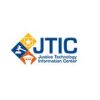The Auto-Gyro MTO Sport, a two-seat, open cockpit gyroplane, costs approximately $75,000 to purchase and about $50 an hour to operate, and runs on the same type of gasoline used in automobiles. It needs minimal room to take off and land, and uses very little hangar space. The craft can fly at speeds up to 115 mph or as slow as 0 mph. Add all of those pluses together, and Tomball’s use of the MTO Sport gyroplane scored high enough to be named one of the “Top 30 Law Enforcement Technology Stories of 2011” by Government Technology.
Tomball, a municipality of approximately 15,000 people located in Houston’s suburban Harris County, used Office of Justice Programs’ National Institute of Justice (NIJ) assistance to launch the nation’s first-ever law enforcement gyroplane.
“In 2009, I attended the NIJ Applied Technologies Conference in Coronado, Calif., where I saw a demonstration of a powered parachute,” says Tomball Chief Robert S. Hauck. (See TechBeat, Summer 2006). “That was my introduction to the NIJ Aviation Technology Program and nonconventional aircraft. Before coming to Tomball, I spent 20 years with the Los Angeles Police Department, and just took for granted that aerial support was available to officers on the ground 24/7. When I came to the Houston area, I discovered that resources were much more limited.”
Hauck initially expressed interest in obtaining a powered parachute for use in Tomball, but learned that the prevailing Texas winds made its use impractical. The program wanted to look at the Auto-Gyro for testing and evaluation, and Hauck and two of his officers eventually found themselves attending a week of training along with a certified pilot from the Harris County Sheriff ’s Office. Harris County has served as a “mentoring partner” to Tomball on the project.
“When [NIJ Aviation Technology Program Manager] Mike O’Shea asked me to make a presentation on behalf of Tomball to the Aviation Technology Working Group in 2010, I told him I’d be glad to come, but I reminded him I wasn’t a pilot,” Hauck says.
“He said that’s why he wanted me to come, because I had 20 years of ground experience and knew the value of aerial support, and I wasn’t making a pitch because I was a pilot and thought it would be cool to fly a gyroplane. So I went in and told the committee, ‘I can guarantee you there is not a person in this room who has less experience with flying than me, because my experience is zero.’”
The working group heeded Hauck’s words and on March 25, 2011, the gyroplane flew its first mission, providing aerial support at a community festival. Since then, the 60-officer agency has found many uses for the Auto-Gyro, including aggressive driver patrols, incident patrols, aerial photography and event support. The demonstration project has a goal of reporting best practices, actual operating costs and other benefits to NIJ following 300 operational hours of flight time.
According to O’Shea, NIJ had researched the Auto-Gyro and found it to have an outstanding safety record in addition to being affordable to small and rural agencies that cannot afford to spend $3 million on a helicopter to provide aerial support. Those findings placed it alongside powered parachutes and light-sport aircraft as options offered to agencies that participate in the program’s demonstration efforts.
“There have been some challenges with training,” Hauck says. “When you start an aviation program and you have no pilots, it takes time to get things up and running. Tomball made a commitment to the project, but we couldn’t have done it without NIJ’s support and technical expertise or the support we’ve received from Harris County. I would recommend that any small agency that is planning to get involved in a low-cost aviation project work with a partner that already has a full-time program for advice, assistance and training. The Auto-Gyro and the aviation program in general are opening a door and giving small and middle-sized agencies a chance to have a force multiplier in the air.”
For more information on the Tomball Police Department’s use of the Auto-Gyro, contact Chief Robert S. Hauck at (281) 351-5451 or rhauck@ci.tomball.tx.us. For more information about the NIJ Aviation Technology Program, contact Program Manager Mike O’Shea at (202) 305-7954 or michael.oshea@usdoj.gov. To view a video on the NIJ program, go to www.youtube.com/JUSTNETorg and click on NLECTC Minutes.


